Preventing the Next Pandemic
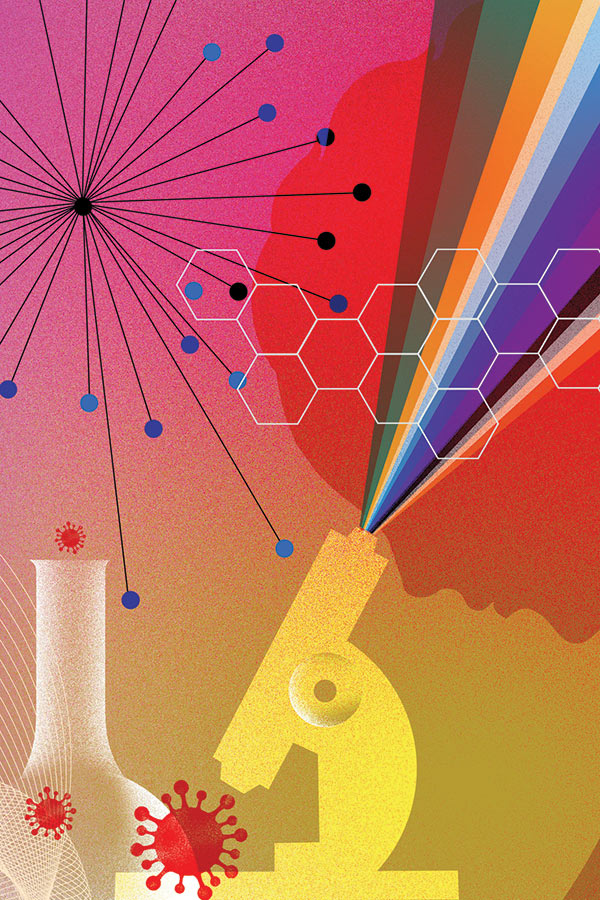 (Illustration: Brian Stauffer for the University of Rochester)
(Illustration: Brian Stauffer for the University of Rochester)Rochester COVID Experts
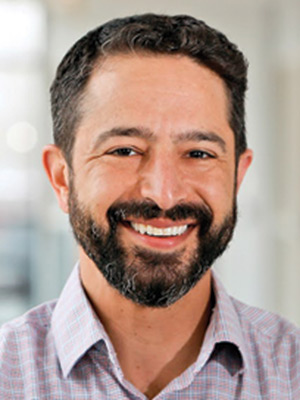 Zachary Borus
Zachary Borus(Photograph: Rylan Howe/Okoboji Magazine)
Zachary Borus
A family physician at Avera Health in Spirit Lake, Iowa, Zachary Borus ’09M (MD/MPH), ’12M (Res), ’13M (Flw) is chair and medical director of the Dickinson County Board of Health.
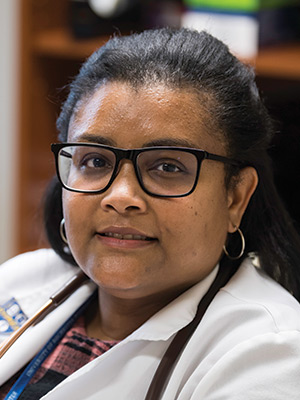 Angela Branche
Angela Branche (Photograph: J. Adam Fenster)
Angela Branche
An associate professor of medicine at Rochester, Angela Branche is a coprincipal investigator of the University’s Vaccine Treatment and Evaluation Unit, one of 10 National Institutes of Health–funded network sites in the United States.
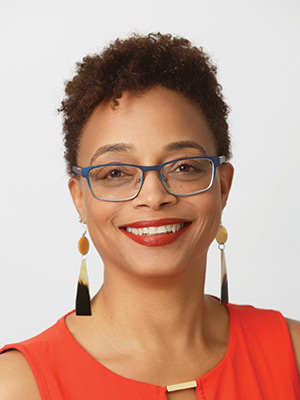 Toni Eyssallenne
Toni EyssallenneToni Eyssallenne
A senior medical advisor to the chief medical officer at the New York City Department of Health and Mental Hygiene, Toni Eyssallenne ’06M (MD/PhD) is also a clinician at Strong Children Wellness in New York City. She is a cohost—with Aimee Pugh-Bernard—of the science podcast Help! Make It Make Sense.
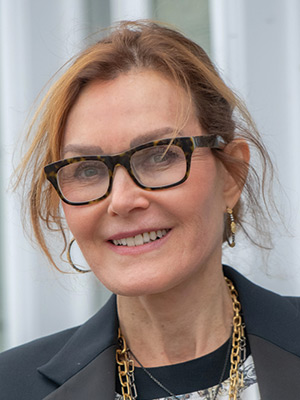 Lynne Maquat
Lynne MaquatLynne Maquat
The J. Lowell Orbison Endowed Chair and Professor of Biochemistry and Biophysics at Rochester, Lynne Maquat directs the University’s Center for RNA Biology. She received the 2023 Gruber Genetics Prize from the Gruber Foundation and Yale University. At Rochester, she also holds appointments in oncology and pediatrics.
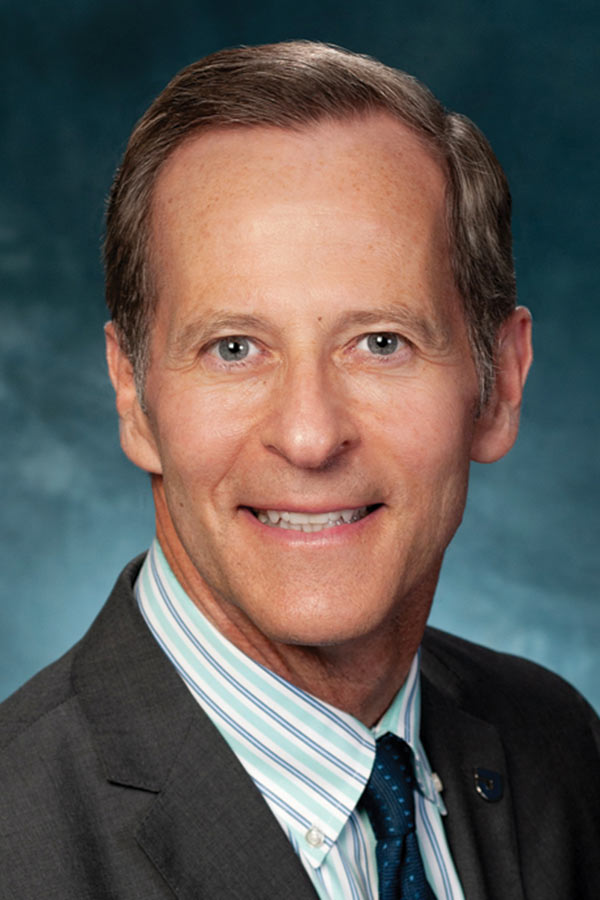 David Nash
David NashDavid Nash
Coauthor of the 2022 book How COVID Crashed the System (Rowman & Littlefield), David Nash ’81M (MD) is the founding dean emeritus of the Jefferson College of Population Health and a professor of health policy at Thomas Jefferson University.
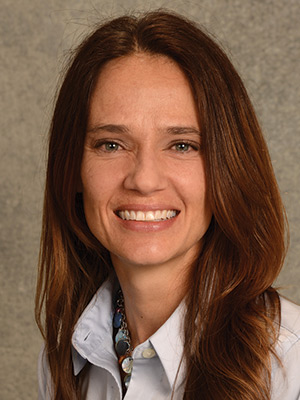 Aimee Pugh-Bernard
Aimee Pugh-BernardAimee Pugh-Bernard
An assistant professor in the Department of Immunology and Microbiology at the University of Colorado Anschutz Medical Campus, Aimee Pugh-Bernard ’01M (PhD) is a cohost—with Toni Eyssallenne—of the science podcast Help! Make It Make Sense.
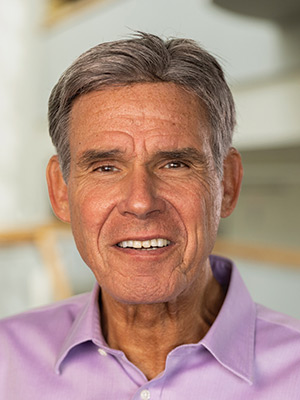 Eric Topol
Eric Topol (Photograph: Meghan Lloyd/Scripps Translational Research Institute)
Eric Topol
One of the 10 most-cited researchers in medicine, Eric Topol ’79M (MD) is the founder and director of the Scripps Research Translational Institute, where he is a professor of molecular medicine. An influential presence on Twitter, he has nearly 700,000 followers.
The United States is a country that prides itself on its dogged optimism and can-do spirit, so perhaps it’s no surprise that few moments in the nation’s history have provoked the kind of cognitive whiplash brought on by the COVID-19 pandemic.
Take, for example, the experience of David Nash ’81M (MD). As founding dean emeritus of the Jefferson College of Population Health, Nash was confident about the country’s chances against the novel coronavirus in the earliest days of 2020.
Though he had spent years studying the flaws of the country’s health care system, he also had faith in the nation’s technological expertise and planning.He watched with shock and devastation as months passed and deaths mounted—the highest total of any country in the world.
Today, Nash pulls no punches in his analysis of the nation’s response, comparing it to an airplane crash in his 2022 book, How COVID Crashed the System.
“COVID shined a spotlight on many of the problems that we knew existed in our health care system all along, so we don’t need to search for the black box,” he says, ticking off problems ranging from educational failures to systemic inequality.
Still, he sees a path toward a better future. “We can work together to fix the problems that led us here.”
It is a confidence that’s common to many of his fellow Rochester alumni and faculty experts. We asked a small panel of those experts to share what they took away as the fundamental lessons of the past few years—as well as offer strategies to navigate future pandemics more effectively.
1. Lean on discovery research and accelerate work in emerging fields.
In late 2020, the United States began rolling out COVID vaccines years earlier than almost any expert initially predicted. The shots were made possible, in part, because of technology linked to messenger RNA. For many, it felt almost magical. But one person who wasn’t surprised was Rochester biochemist Lynne Maquat, who has studied the mechanisms of messenger RNA since the 1970s, when she was an undergraduate.
And while mRNA grabbed the spotlight during the pandemic, Maquat acknowledges that it was a long journey from obscurity to prominence. “When I was young and would go to professional conferences to discuss my work on mRNA, I’d be in the last session on the last day, where they’d just throw together everything that wasn’t a major topic,” she says. (Today, she’s not fighting for conference slots: “Even the people I meet when I’m walking my dog or on airplanes know about it,” she jokes.)
Maquat’s path highlights the importance of discovery research, also commonly known as fundamental research or basic science. Such work aims to unravel how cellular processes work normally and in human diseases, rather than on solving specific, known problems. And while such research can initially feel removed from life-saving therapeutics, the knowledge generated from discovery research may later offer a road map to solve problems that were previously unknown to exist. “You can’t just study what a disease looks like. You usually need knowledge of what’s going on in the body at the molecular level to find a fix,” she says. “From discovery research, scientists in academics and industry had a fairly good working understanding of potential therapeutics for COVID.”
While RNA’s potential in vaccines and other treatments had been tested in modest ways before COVID, the pandemic accelerated advances in its use.
Maquat believes scientists are just scratching the surface of its potential. With what she describes as a nearly plug-and-play solution for mRNA vaccines, she expects to see rapid vaccine developments for the seasonal flu, other infectious diseases, and cancer.Such advances might also play a role in diseases that affect animals, like the recent devastating bird flu. “It’s a whole new field,” she says. “The timing is ripe for RNA as a target and a tool for therapeutics to completely blossom.”
2. Strengthen efforts toward an open, global approach to scientific progress.
Scientific progress can be slow and grinding: researchers often work on projects quietly and in relative isolation to advance important ideas, battle through layers of reviews and critiques as they refine their ideas, then wait many months before their results are published in prestigious journals.
COVID upended such practices all but overnight in favor of a faster and more broadly collaborative approach.
Clinical scientist Angela Branche got an early sense of the “we’re-in-it-together” mindset in January 2020. She and professor of medicine Ann Falsey had received a National Institutes of Health grant in November 2019 to relaunch the University’s Vaccine Treatment and Evaluation Unit, and they were attending the inaugural meeting with other grant recipients when National Institute of Allergy and Infectious Diseases director Anthony Fauci stepped on the stage. “He said that the new virus coming out of China was what we were going to be working on for the next couple years,” she recalls. “He told us to get ready: to mobilize our teams, our networks, and our infrastructure.”
The collaborative, all-hands-on-deck approach wasn’t limited to the United States. Early on, researchers in China shared an initial genome sequence of the virus in an open discussion forum, and a Scottish researcher pinpointed important hallmarks of the virus within 24 hours.
The publication process got scrambled, too. Some 25,000 COVID-linked scientific papers were published as “preprints”—released before formal review—during the first year of the pandemic alone. The preprints opened up the potential to make speedier progress against the virus but also required some scientists to bypass certain types of academic recognition to do so.
Branche believes that scientists should continue to pursue such open, synergistic processes not just for future pandemics but for all major scientific endeavors. “While there are certainly national boundaries and national priorities, the scientific community did a lot of successful work at a global level, from sharing data to sharing methodologies,” she says. “I’m optimistic that the scientific community will move away from some of the more territorial approaches that have marked scientific endeavors in the past.”
3. Recognize the importance of systems in medical education and health care.
In the earliest months of the pandemic, New Yorkers banged pots and pans from their balconies to show gratitude for the health care workers treating an overwhelming number of sick patients.
Nash is the first to recognize the courageous efforts of those dedicated providers at an impossible moment. But he adds that the daily ritual reinforced a common but overly simplistic idea—sometimes held by doctors themselves—that what might stem the tide of a pandemic was the tireless work of exceptional individuals rather than the methodical operation of robust systems.
That individualistic lens is a notion that’s often promoted in popular culture and even in medical school, says Nash.
“There’s a rich history in medical education that teaches people that they are autonomous, heroic decision makers who bear total responsibility for patient outcomes,” he says. “But that’s a model that goes back to the medieval guild. It’s a model that cannot work in America, where health care is a $4 trillion industry that represents nearly 20 percent of the gross domestic product. It’s simply too complex.”
To be prepared for the future, medical education must shift its focus from individual care to systems of care. That includes teaching a new generation of doctors and health care workers the value of systems thinking and of their roles in supporting health beyond exam room and clinic walls. For example, Nash hopes to see more robust education for doctors on the myriad ways that they can help patients access a variety of health care experts—from dietitians to social workers—to support better health.
It also means reimagining health as a broader, public initiative, rather than as an individualistic pursuit. For example, says Nash, financial incentives often lead medical establishments to address obesity by building a bariatric surgery operating room—but the issue might be more effectively addressed by teaching healthy eating habits consistently in schools and offering healthier school lunches. “We could reduce food deserts and offer more subsidies to support healthy eating,” he says.
Across the board, says Nash, it’s time to think bigger. “We should be teaching health care workers to think of themselves as part of a team and a larger system that delivers care,” he says. “And that means our core job is not to deliver technical services but to improve health.”
4. Encourage better health for all.
While there were many contributing factors to the nation’s abysmal COVID outcomes—a death-per-confirmed-COVID-case ratio that was the worst of any country in the world, according to Johns Hopkins data—there’s no question that the poor health of Americans more generally played a role in the grim numbers. For example, the nation’s sedentary lifestyle and low rates of appropriate preventive care contributed to the numbers.
“Americans’ life expectancy went in reverse in 2019—before COVID,” says Nash.
It might be easy to blame poor choices for declining health, but entrenched systems and incentives often lead to poor evaluation of problems and solutions. For example, those who had healthy lungs fared far better during COVID than those who did not. Federal regulations could support better lung health by requiring well ventilated buildings and less polluted air. Establishing and maintaining parks and green spaces that are readily accessible to all could encourage more people to take part in lung-supporting exercise. Such population-level solutions enhance the health of far more people than solutions targeted to individuals much later in the process.“We need to have a totally different mindset,” says Nash. “We need to be thinking about going upstream to shut off the faucet instead of waiting—and then mopping up the floor.”
5. Innovate in ways that are nimble and long lasting.
As she mapped out her plans for the new year in late 2019, Branche imagined she might spend 2020 making methodical progress on things like universal influenza and RSV vaccines as part of the University’s Vaccine Treatment and Evaluation Unit.
Instead, by early March, she and her team were enrolling patients in trials to test Remdesiver, a drug that showed early promise for treating the outsize inflammatory response that COVID patients were experiencing.“We were getting calls from people in places as far away as Tennessee and Iowa asking if we could enroll them in our trials. We were just trying to keep patients alive long enough to try to find something that could work,” she says, pausing to gather herself. “It was very stressful. It was heartbreaking.”
If there was any silver lining to the brutal swiftness and destructiveness of COVID, it was the concomitant speed with which scientists overhauled their processes to meet the challenge—and make improvements that will save countless lives beyond the pandemic.
Branche cites wider adoption of adaptive protocols as just one of the ways that scientists have sped up the scientific process without sacrificing rigor. “When you’re designing a study or a trial, an adaptive protocol means you leave the question open-ended enough that you can build on the initial information from the study or trial.”
For example, a scientist might decide to pursue hypothesis X; if the outcome of a test is Y, the next action is A. If the outcome is Z, the next action is B. “We’ve talked about it in the past as a good way to do studies, but it was harder to fund,” she says. “But it was so successful during COVID that it’s become seen as a better model.
That kind of innovation was among the many changes—including parallel, closely monitored phase I, phase II, and phase III trials for vaccines and therapeutics—that helped condense timelines for treatments and vaccines from the expected yearslong process to a matter of months.
“In some ways, everything else came to a halt because of COVID,” says Branche. “But we have translated the lessons we learned about more efficient and better research methodology to other areas and other pathogens.”
6. Root out paternalistic skepticism that inhibits progress.
Science is a process designed to move us ever closer to the truth through smart questions, careful data collection, and thoughtful analysis. But scientists, like all humans, bring their biases to the table in ways that can slow progress.
Eric Topol ’79M (MD) says that one particularly troubling bias that took many months to unwind in America was a reluctance to offer at-home COVID testing.
“The FDA was too paternalistic and didn’t want the public to have home tests,” he says. “But it’s something we should have had much earlier in the pandemic.”
At the time, there were reasons for skepticism: there were few at-home tests in wide use outside of pregnancy tests (a test that itself faced similar skepticism when it was introduced in the 1970s). There were questions about whether or not people could reliably test themselves and how they might interpret tests that couldn’t offer 100 percent accuracy.At-home tests got the go-ahead in 2021, but Topol hopes that there will be more efficient ways to put tools into the hands of many, rather than holding them back exclusively for expert practitioners.
“We know that people can actually handle the nuances of testing, and we know that if we had trusted people we could have avoided a lot of virus spread,” he says. “In the future, I hope we will do more to democratize medicine.”
7. Emphasize clear, but nuanced, scientific communication.
Immunologist Aimee Pugh-Bernard ’01M (PhD) knows that it can be tough for the general public to understand the jargon that scientists use in their daily conversations and academic papers.
“If you go to my LinkedIn page,” she says, “you’ll see that I have my specialty, immunology, listed as a second language.”
It’s a lighthearted acknowledgment of scientists’ specialized terminology, but it also reflects a larger reality that had devastating consequences in the thick of the pandemic. The language of science during the pandemic reflected the evolving, nuanced, and sometimes ambiguous reality of changing knowledge of the virus. Misinformation and disinformation, by contrast, were clear, forceful, and persuasive. The result? A “pandemic of mistrust” led to a higher number of deaths than in similarly resourced countries.
Pugh-Bernard says it’s time to focus on more effective science communication to the public. “It’s easy for scientists to forget what it’s like not to know the vocabulary and process of science, and not to understand what it’s like to be someone who’s on the outside of that bubble,” she says. “But scientists need to be able to explain their work not just to their colleagues but to the general public.”
Scientists and public health communicators can take away important lessons from this particular pandemic failure, says Pugh-Bernard, and that includes helping people understand that the scientific process doesn’t offer a clean, unobstructed path to the truth.
“Scientists don’t debate the results of one another’s work because they’re trying to spread disinformation or inspire fear or anger,” she says. “We’re poking holes in each others’ research to make it better.”
She adds that communicating findings in simple, meaningful ways can include the skillful use of metaphors—Pugh-Bernard herself may stress-test dozens before choosing one in her own communications. Many people, for example, initially assumed that a vaccine for the virus that causes COVID would be like a bullet-proof vest. Instead, says Pugh-Bernard, it would have been more accurate to compare them to seat belts. “Seat belts don’t prevent crashes in the same way that COVID vaccines don’t prevent infection,” she says. “But both can help prevent serious injury and death.”
Clear communication, says Pugh-Bernard, is an essential part of effective science. “Science can have a great impact,” she says. “But we can’t maximize it unless we communicate the science to the public in effective ways.”
8. Work with great empathy.
When clinician Toni Eyssallenne ’06M (MD/PhD) thinks about the way that Americans made their decisions to get or to decline a vaccine, she thinks not about the people who got their shots immediately nor those who refused on principle. Both of these groups were certain of their decisions.
Instead, she thinks of the many vaccine-hesitant individuals who had sincere questions about the safety and efficacy of the shots, but who couldn’t have the in-depth conversations with experts they trusted to build the confidence they needed to make a good decision for their health and their family’s health.
“If you are genuinely concerned that a vaccine might be hurting your baby or that it might cause autism, of course you’re going to be scared of making the wrong decision,” she says.
She didn’t have to imagine that fear: Eyssallenne herself—a scientist who has an MD and PhD—had plenty of questions about a vaccine that was developed in less than a year. Some of her family members, who were also skeptical, peppered her with questions.
It was only through her own deep research, which included conversations with her longtime friend and former across-the-hall lab colleague Pugh-Bernard, that Eyssallenne felt confident that she could trust and promote the vaccines.
“I would message her a lot: What about this? What’s the reason for that? We really went down some rabbit holes,” she says. “But I was able to answer every single question I had because of her help.”
Those conversations expanded in unique ways: Eyssallenne developed educational PowerPoint slides that she shared with her family to help assuage their fears of the vaccine. And she and Pugh-Bernard launched a podcast, Help! Make It Make Sense, to bring this same type of clear, thoughtful, and deeply humane conversation about science to a broader audience.
This methodical, empathetic patience can help people take the actions that will most likely keep them safe and healthy in the long run, says Eyssallenne. “It’s important to do this work not because you’re trying to persuade people, but because people must really believe, deep in their bones, that they’re not hurting their families or themselves, and that they’re not getting the wool pulled over their eyes,” she says. “We can’t promise what the next 10 years are going to bring, but no one can. What we can say is that we’re trying to stay alive today.”
9. Be sensitive to cultural differences.
Family physician Zachary Borus ’09M (MD/MPH), ’12M (Res), ’13M (Flw) looks back at the way that Dickinson County rode out the early days of the pandemic with significant pride. Clinically, his rural northwest Iowa county of 18,000 and its municipal hospital strengthened its partnership with Avera Health, a large health system in Sioux Falls, South Dakota. It built local capacity to care for sicker patients to ensure that those who needed true tertiary care were able to be transferred. Using home nursing, robust telehealth and remote patient monitoring, they kept people who were less ill at home and stepped up efforts to care for critically ill patients.
From a public health perspective, while Borus says there was an early, across-the-board sense of cohesiveness and determination among the area’s residents, he also understands why skepticism about the virus simmered just beneath the surface.
“We really shut down before COVID got to rural places like ours, and by the time it did, everyone felt exhausted,” he says. “They said, ‘I’m not doing that again.’ ” This was especially true in the Iowa Great Lakes region, a popular summertime tourist destination that draws visitors from around the country.
While those in densely populated areas who were hit first and hit hard by COVID had seen the devastation firsthand and were more prone to trust experts like Anthony Fauci, the same trust was not always shared by rural Americans, whose experiences were different. Often, the most trusted voices in rural communities were health care providers who had built up credibility in the community over the course of years—as Borus had.
Through a series of videos, Zoom meetings with business groups, and one-on-one conversations, Borus attempted to share timely evidence-based information with a focus on data from his own community. He faced pushback from COVID skeptics, but he also felt a profound duty to keep his community safe.
“Often, I was the one telling them what they didn’t want to hear, because it might affect their business or it might affect tourism,” he says. “I tried to share facts in ways that appealed to people’s best selves: if they had COVID and spent time with Grandma, she could die from it. It needed to be real for people. But also, I knew I had to respect their individual rights and choices, or they wouldn’t listen.”
It was a delicate balance at a time when Borus was already working a more-than-full-time clinical job under extreme pressure.
“It was really hard,” he admits of the frustration and occasional exasperation he felt when he had to patiently explain the inaccuracies of a Facebook meme or online conspiracy theory for the hundredth time.
In the future, he says, the country will need consistent national messaging while also promoting local experts who speak to their communities’ unique needs and circumstances. “So much of the mistrust came from misinformation from social media and partisan news outlets,” he says. “But in a small town where I’m both their doctor, their neighbor, and their kid’s soccer coach, it’s harder to dismiss me out of hand. By developing local public health leaders and systems across the country, we can rebuild the public’s trust in the system as a whole.”
10. Pursue a world that’s better for all.
If Nash and others were overconfident in their early assessments of the nation’s performance during a pandemic, he and other Rochester scientists and experts bring a clear-eyed pragmatism to the challenges now.
Today, there’s little doubt that the stakes are high for getting it right next time.
And Nash believes the country has the tools to do better in the future. “We know what brought the plane down,” he says. “We don’t have to send the same kind of plane back up in the air.”
Erin Peterson is a writer based in Minneapolis.

